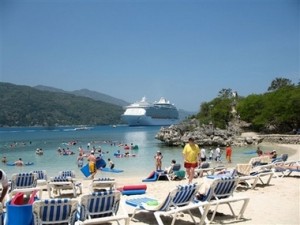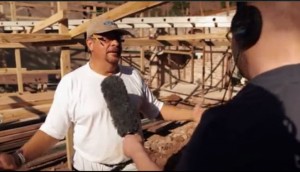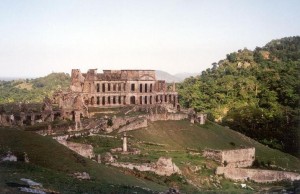Is it appropriate to sail into the idyllic port of Labadee, Haiti on a pleasure cruise when the dead remain unburied and the impoverished country writhes in chaos?
(Cruise Law News, January 19, 2010)
 Labadee is an enclave that Royal Caribbean Cruises Ltd carved out of the north coast of Haiti as a “private paradise” for passengers on its Caribbean cruise. It did this pursuant to a long-term lease with the Haitian government beginning in 1985.
Labadee is an enclave that Royal Caribbean Cruises Ltd carved out of the north coast of Haiti as a “private paradise” for passengers on its Caribbean cruise. It did this pursuant to a long-term lease with the Haitian government beginning in 1985.
But few people had ever heard of Labadee before the provocative question above stirred a media debate in the aftermath of the January 2010 earthquake. More to the point, you’d think this question would’ve posed some kind of moral/social conflict for Royal Caribbean. But it did not.
For in an interview with National Public Radio on January 19 (just one week after the quake), its president, Richard Goldstein, said that the decision to continue business as usual in Haiti was a “no-brainer.”
The cruise line insisted that it could do more by donating one million dollars to Haiti’s recovery and rebuilding efforts from revenues generated on Labadee. Never mind that, according to a September 28, 2011 report by Bloomberg Businessweek, Royal Caribbean raked in $6.8 billion in 2010; or that its rival Carnival donated six million dollars even though it does not profit off Haiti the way Royal Caribbean does….
That said, the point of this commentary is not to hurl belated moral indignation. Not least because I am all too mindful that the mindset that allowed Royal Caribbean to treat post-quake misery just miles from Labadee as if it were unfolding in Bangladesh reflects that of resort developers throughout the Caribbean who have been invited over the years by local governments to treat vast areas of their pristine coastline as exclusive, almost hermetically sealed enclaves for visiting tourists.
Instead, I would like to suggest a way Royal Caribbean can make itself a better corporate citizen and earn an unprecedented amount of international goodwill.
 One of my favorite TV programs is Frontline, which is a less commercialized version of 60 Minutes. On Tuesday night it featured a truly compelling report by Adam Davidson entitled “An Optimist in Haiti”, which posed this quixotic question:
One of my favorite TV programs is Frontline, which is a less commercialized version of 60 Minutes. On Tuesday night it featured a truly compelling report by Adam Davidson entitled “An Optimist in Haiti”, which posed this quixotic question:
Can one man’s unlikely tourism plan turn around Haiti’s economy?
That man is Lionel Pressoir. And the central feature of his plan is a restaurant he’s building to accommodate hundreds of tourists on a daily basis in the small, impoverished town of Milot; notwithstanding that, according to the report, he has never seen a single tourist there.
But Pressoir’s plan “to turn Milot into a major international tourist destination … a cultural and historical mecca” is not as unhinged as it may seem. Because it is grounded in the absolutely stunning and irresistable fact that Milot is home to Haiti’s most historic sites:
-
the ruins of the Palais de Sans Souci – the residence of Haiti’s revolutionary war hero and first president (1807-11) Henri Christophe; and
-
the Citadelle Laferrière – the fort he built to fend off what every citizen in the early days of this first independent black nation in the new world feared would be an avenging attack by the French to reclaim it as a colonial possession.
 Call him crazy, but Pressoir has an abiding belief that if these sites were included in a slick promotional campaign and roads were built to make them more accessible, tourists would come in droves. I agree.
Call him crazy, but Pressoir has an abiding belief that if these sites were included in a slick promotional campaign and roads were built to make them more accessible, tourists would come in droves. I agree.
Of course, with all of the other infrastructural demands on what little of the billions pledged to rebuild Haiti has been received, nobody expects roads to be built anytime soon that could take the few tourists who fly to major cities like Port au Prince to Milot. In fact, no less a person than Bill Clinton, in his capacity as UN Special Envoy to Haiti, visited Milot way back on October 2, 2009 with a delegation of potential investors and pledged to build the roads to facilitate access to the area by tourists. Yet not a single drop of tar has been laid pursuant to his pledge.
This is why Pressoir is so focused on luring tourists from Royal Caribbean’s captive enclave of Labadee, which is only a tantalizing 10 miles along one rickety road from Milot. The problem is that he’s barking up the wrong tree by trying to get the Haitian government to buy into his plan.
Hence my suggestion: specifically, I am convinced that if Royal Caribbean were persuaded that, in addition to sunbathing and frolicking on the beach, its passengers would enjoy an excursion to Milot’s historic sites, Pressoir’s plan would be realized in a flash.
This is where all of you come in. Because if everyone contemplating a Caribbean cruise were to express a firm interest in visiting these sites, Royal Caribbean would find a way to make it happen – even if that means adding a one-dollar surcharge to raise the $20 million Pressoir thinks is necessary to build a proper road between Labadee and Milot. Given its $6.8 billion in annual revenues, though, that $20 million is chump change.
But even if you have no interest, contact them anyway to say you’d be interested if this excursion were available. And you might mention that going on a cruise to Haiti and not visiting the Palais de Sans Souci and the Citadelle Laferrière is rather like going on a cruise to Greece and not visiting the Parthenon and the Acropolis. Unthinkable, right?!
So please contact Royal Caribbean, and get your family and friends to do the same: Contact Us
Related commentaries:
Haiti earthquake one year later